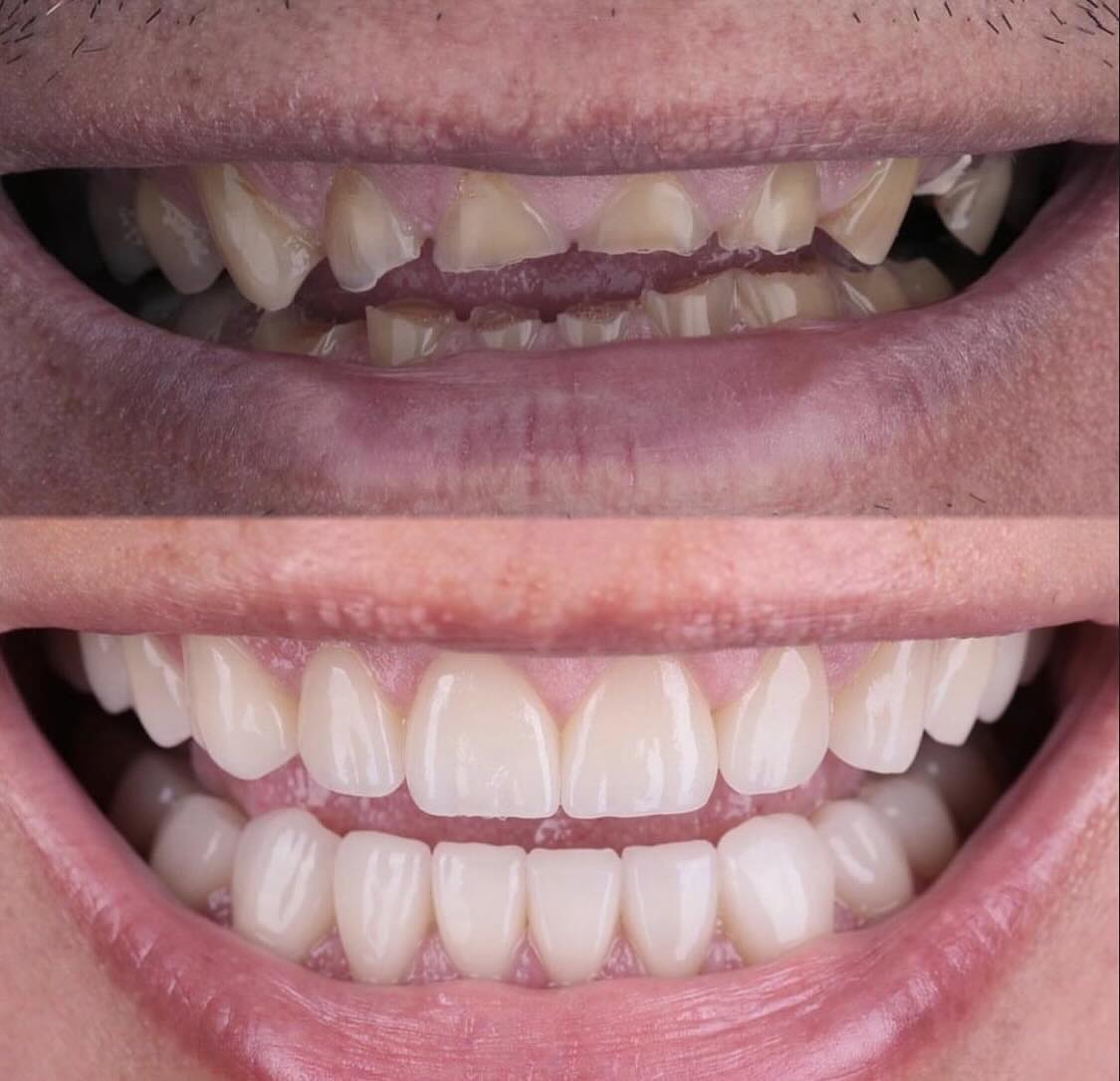
A 56-year-old male patient sought dental treatment due to a lifelong struggle with teeth grinding, also known as bruxism. His extensive history of grinding had taken a toll on his oral health, leading to a collapsed bite. This condition not only affected his dental function but also caused discomfort and aesthetic concerns.
The patient's lifelong battle with bruxism had resulted in severe wear and tear on his teeth, leading to a significant reduction in the vertical dimension of his bite. This collapsing of the bite had far-reaching consequences, including impaired chewing function, jaw discomfort, and facial muscle pain. Additionally, the visual aspect of his smile was affected, contributing to a worn and aged appearance.
After a thorough evaluation and consultation, it became evident that restoring the patient's oral health and bite functionality would require a comprehensive approach, often referred to as full mouth reconstruction with dental crowns. The most appropriate course of action was determined to be the application of dental crowns—a hallmark of modern dentistry. These crowns would not only strengthen the remaining teeth but also restore the vertical dimension of the patient's bite, ultimately alleviating the discomfort and aesthetic concerns associated with the collapsed bite.
The patient's decision to undergo dental crowns aimed at addressing both functional and cosmetic aspects of his dental health. The crowns would provide the necessary support and alignment to restore the proper vertical dimension of his bite. This would enhance his ability to chew food comfortably and reduce the strain on his jaw and facial muscles, thereby alleviating the discomfort he had experienced for years.
Furthermore, the cosmetic benefits of dental crowns were significant within the context of modern dentistry. The crowns would not only improve the patient's bite but also rejuvenate his smile, effectively reversing the years of wear and tear caused by bruxism. The final result would be a more youthful and aesthetically pleasing appearance, giving the patient a renewed sense of confidence and well-being.
The application of dental crowns was carried out with meticulous care and precision—a hallmark of modern dentistry. The process involved creating custom-made crowns for each tooth to ensure a seamless fit and alignment. Once the crowns were in place, the patient experienced a remarkable transformation in both the function and appearance of his smile.
Following the successful completion of the full mouth reconstruction with dental crowns, the patient reported significant improvements in his chewing ability, comfort, and overall oral health. His bite had been restored to its proper vertical dimension, alleviating the discomfort caused by years of grinding. Furthermore, the cosmetic enhancements provided by the crowns resulted in a rejuvenated and attractive smile.
In conclusion, the case of this 56-year-old male patient with a collapsed bite due to lifelong bruxism highlights the transformative power of full mouth reconstruction with dental crowns and modern dentistry. By addressing both functional and aesthetic concerns, this comprehensive treatment approach not only improved the patient's oral health but also enhanced his overall quality of life. It serves as a testament to the effectiveness of modern dentistry in restoring functionality and aesthetics to even the most challenging dental cases.